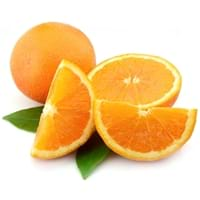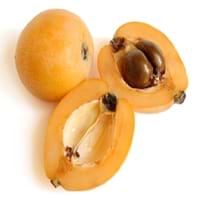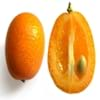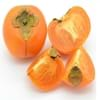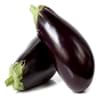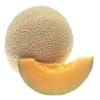Health Benefits
Arthritis treatment, Cancer prevention, Heart care
Cancer prevention, Heart care, Reduces nervous tension, Reduces blood circulation problems, Reduces stress, Regulation of heart rate, Strengthening of bones
General Benefits
Anti-inflammatory properties, Cures cough, Cures fever, Digestive aid, Healing of wounds, Maintains healthy cholesterol level
Anti-inflammatory properties, Controls blood pressure, Digestive aid, Eye care, Helps in weight loss, Improves eye vision, Maintains healthy cholesterol level, Strengthens bones
Skin Benefits
Anti-aging benefits, Brightens and lightens complexion, Reduces wrinkles, Treatment of dark spots
Anti-aging benefits, Reduces wrinkles, Treatment of dark spots, Treatment of skin diseases
Hair Benefits
Promotes longer and healthier hair, Protects hair, Rejuvenates scalp, Shiny hair
Protects hair
Allergy Symptoms
Abdominal cramps, Hives, Itching, Nausea, Wheezing
Diarrhea, Itching of mouth, Nasal congestion, Sneezing, Swelling of face, Watery eyes
Side Effects
Allergic reaction, Skin rash, Possibly unsafe during pregnancy
Allergic reaction
Best Time to Eat
As a snack in the late afternoon, Eat the fresh ones, avoid mixing with any other foods, don't eat after meal., Morning time (before lunch), Strictly avoid empty stomach
Along with meal, As a snack in the late afternoon, Don't consume at night and before bed, Morning time (before lunch)
Vitamin B5 (Pantothenic Acid)
Not Available
Vitamin C (Ascorbic Acid)
Not Available
Vitamin E (Tocopherole)
Not Available
Vitamin K (Phyllochinone)
Not Available
Lutein+Zeaxanthin
Not Available
Phytosterol
Not Available
Calories in Fresh Fruit with Peel
Not Available
Calories in Fresh Fruit without Peel
Not Available
Calories in Frozen Form
Not Available
Not Available
Calories in Dried Form
Not Available
Calories in Juice
Not Available
Calories in Jam
Not Available
Calories in Pie
Not Available
Type
Citrus
Tree fruit, Tropical
Varieties
Clementine, Dancy, King Mandarin, Murcott, Ponkan, Robinson, Satsuma and Sunburst
Ahdar, Ahmar, Asfar, Blush, Champagne, Early Red, Eulalia, Fire Ball, Golden Red, Golden Yellow, Oliver, Thales, Thames Pride, Victor and Wolfe
Color
Orange
Orange, Yellow
Inside Color
Orange
Orange
Taste
Sweet-Sour
Sweet, Tart
Origin
South-Eastern Asia
China
Grows on
Not Available
Trees
Soil Type
Well-drained
Clay, Loam, Sand, Well-drained
Climatic Conditions
Sunny
Warm to hot climate
Facts about
- It is known by another name ' Mandarin'.
- Oil extracted from its peel is used in various skin and hair care products.
- Tangerines is also known as the ‘Christmas Orange’ because it is used to stuff kids' stockings..
- Loquats are used in plum wine manufacturing.
- Dried leaves of loquat are used to make herbal tea.
- The seeds of loquat are slightly toxic & the symptoms of intoxication are nausea, vomiting & shortness of breath.
Spirits
Not Available
Yes
Cocktails
Not Available
Yes
Other Countries
Brazil, Iran, Italy, Japan, Korea, Morocco, Spain, Turkey
Brazil, Chile, China, Egypt, Israel, Italy, Morocco, Pakistan, Portugal, Spain, Turkey
Botanical Name
Citrus reticulata
Eriobotrya japonica
Synonym
Citrus clementina or Citrus nobilis
Crataegus bibas or Mespilus japonica or Photinia japonica
Subkingdom
Tracheobionta
Tracheobionta
Division
Magnoliophyta
Magnoliophyta
Class
Magnoliopsida
Magnoliopsida
Species
C. reticulata
E. japonica
Generic Group
Citrus fruit
Rose
Difference Between Tangerine and Loquat
We might think that Tangerine and Loquat are similar with respect to nutritional value and health benefits. But the nutrient content of both fruits is different. Tangerine and Loquat Facts such as their taste, shape, color, and size are also distinct. The difference between Tangerine and Loquat is explained here.
The amount of calories in 100 gm of fresh Tangerine and Loquat with peel is Not Available and 47.00 kcal and the amount of calories without peel is 53.00 kcal and Not Available respectively. Thus, Tangerine and Loquat belong to Low Calorie Fruits and Low Calorie Fruits category.These fruits might or might not differ with respect to their scientific classification. The order of Tangerine and Loquat is Sapindales and Rosales respectively. Tangerine belongs to Rutaceae family and Loquat belongs to Rosaceae family. Tangerine belongs to Citrus genus of C. reticulata species and Loquat belongs to Eriobotrya genus of E. japonica species. Beings plants, both fruits belong to Plantae Kingdom.
